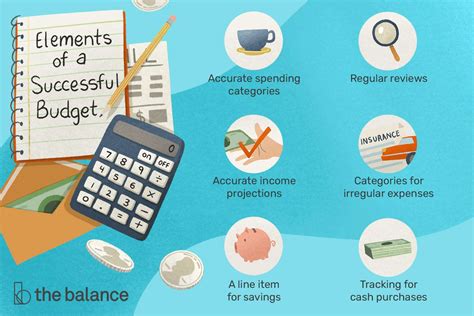Understanding the High-Interest Debt Trap
For many men striving for financial independence and robust long-term wealth, high-interest credit card debt can feel like a heavy anchor. It saps your income, stalls your savings, and can prevent you from achieving significant financial milestones, from homeownership to investment growth. The insidious nature of high-interest rates means that a substantial portion of your monthly payment goes towards interest, not the principal, keeping you on an endless treadmill.
Breaking free requires a deliberate, strategic approach. This isn’t just about paying more; it’s about paying smarter, faster, and with a clear end goal in mind.

Strategy 1: The Debt Avalanche – The Mathematically Fastest Way
If your primary goal is to save the most money on interest and get out of debt as quickly as mathematically possible, the Debt Avalanche method is your champion. Here’s how it works:
- List all your debts: Jot down every credit card debt you have, along with its current balance and, critically, its annual percentage rate (APR).
- Prioritize by APR: Arrange your debts from the highest interest rate to the lowest.
- Pay minimums on all but one: Make the minimum required payment on all your credit cards except the one with the absolute highest interest rate.
- Attack the highest APR: Throw every extra dollar you can find at the credit card with the highest APR.
- Roll it over: Once that highest-interest debt is paid off, take the money you were paying on it (minimum + extra) and add it to the minimum payment of the next highest APR debt. Continue this process until all debts are clear.
This method saves you the most money on interest because you’re systematically eliminating the costliest debt first.
Strategy 2: The Debt Snowball – For Motivational Momentum
While the Debt Avalanche is mathematically superior, the Debt Snowball method is often recommended for those who need psychological wins to stay motivated. It leverages momentum to keep you going:
- List all your debts: Again, list all your credit card debts with their balances and interest rates.
- Prioritize by balance: This time, arrange your debts from the smallest balance to the largest, regardless of interest rate.
- Pay minimums on all but one: Make minimum payments on all cards except the one with the smallest balance.
- Attack the smallest balance: Dedicate all your extra funds to paying off the smallest debt as quickly as possible.
- Roll it over: Once the smallest debt is gone, take the money you were paying on it and add it to the minimum payment of the next smallest debt. Watch the “snowball” grow as you gain speed and confidence.
The satisfaction of quickly eliminating smaller debts can provide the emotional fuel needed to tackle larger ones.

Strategy 3: Debt Consolidation – Streamlining Your Payments
For some, especially those with multiple high-interest cards, consolidating debt can be a game-changer. This involves taking out a new loan or credit line to pay off all your existing high-interest debts, leaving you with a single, typically lower-interest payment.
- Balance Transfer Credit Cards: If you have excellent credit, you might qualify for a 0% APR balance transfer card. This can give you 12-21 months to pay down debt interest-free. Be wary of transfer fees (usually 3-5%) and ensure you pay off the balance before the promotional period ends, or you’ll face high interest on the remaining balance.
- Personal Loans: A personal loan can offer a fixed interest rate lower than your credit card rates, with a set repayment schedule. This provides predictability and can simplify your financial life. Shop around for the best rates and terms from banks and online lenders.
Warning: Consolidation is not a magic bullet. If you don’t address the underlying spending habits that led to debt, you risk running up new balances on your old cards, leaving you in an even worse position.

The Unavoidable Foundation: Budgeting and Expense Cutting
No debt repayment strategy will be truly effective without a solid financial foundation. This means:
- Creating a detailed budget: Know exactly where every dollar goes. Track your income and all your expenses.
- Identifying non-essential spending: Where can you cut back? Dining out, subscriptions, entertainment? Even small cuts can add up to significant extra payments on your debt.
- Finding extra cash: Can you sell unused items? Pick up some overtime? Every bit helps accelerate your debt freedom journey.
Think of it as finding the “extra” money you need to fuel your chosen debt repayment strategy. This step is non-negotiable.

Beyond the Strategies: Sustaining Momentum and Preventing Recurrence
Crushing debt is a significant achievement, but the work doesn’t stop there. To ensure you stay debt-free and build lasting financial resilience:
- Build an Emergency Fund: Once your high-interest debt is gone, redirect your debt payments into a savings account. Aim for 3-6 months of living expenses. This fund acts as a buffer against unexpected costs, preventing you from resorting to credit cards again.
- Adopt New Spending Habits: Your budget should evolve to reflect a new, more responsible relationship with money. Live below your means, track your spending, and regularly review your financial goals.
- Increase Your Income: As you free up cash flow, consider how to strategically increase your earnings through skill development, side hustles, or career advancement. More income makes future financial goals easier to achieve.
Which Strategy is Best for You?
The “best” strategy depends on your personality and financial situation:
- For maximum savings and discipline: The Debt Avalanche.
- For psychological wins and motivation: The Debt Snowball.
- For simplifying multiple high-interest debts (with caution): Debt Consolidation.
Regardless of the method you choose, consistency, discipline, and a commitment to understanding and changing your financial habits are paramount. High-interest credit card debt doesn’t have to define your financial future. Take control, implement a plan, and experience the freedom of a debt-free life.





